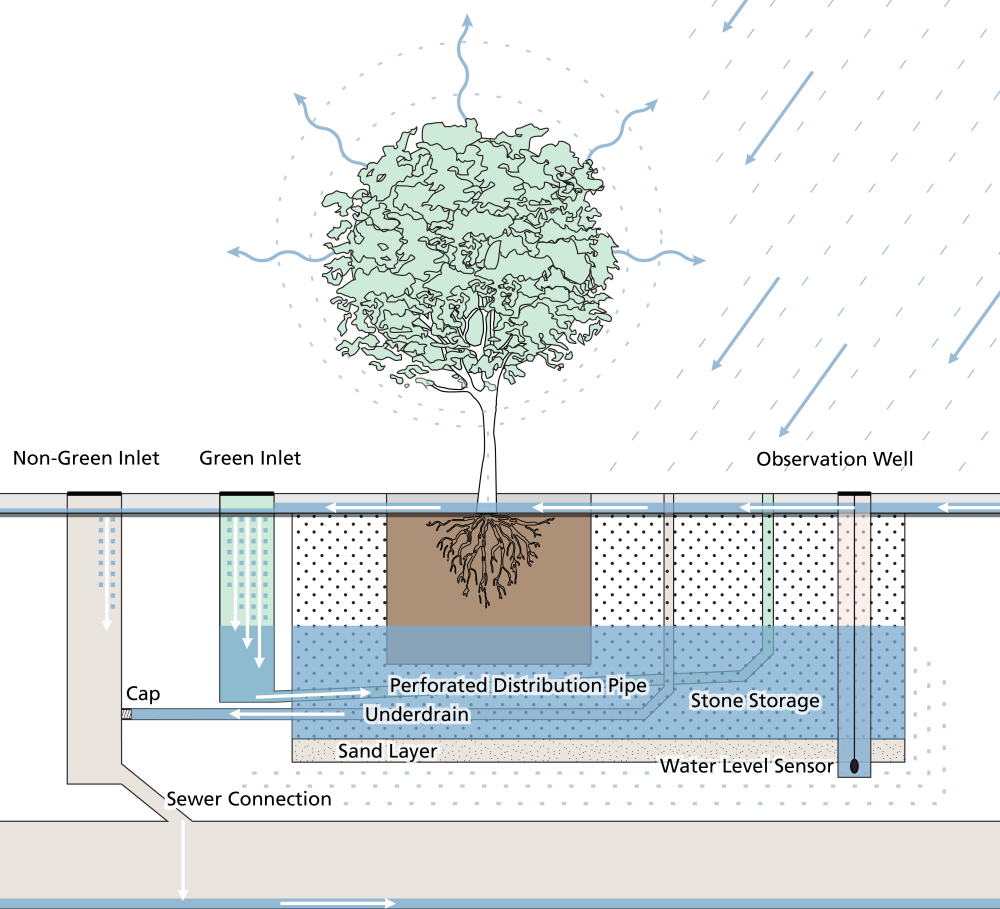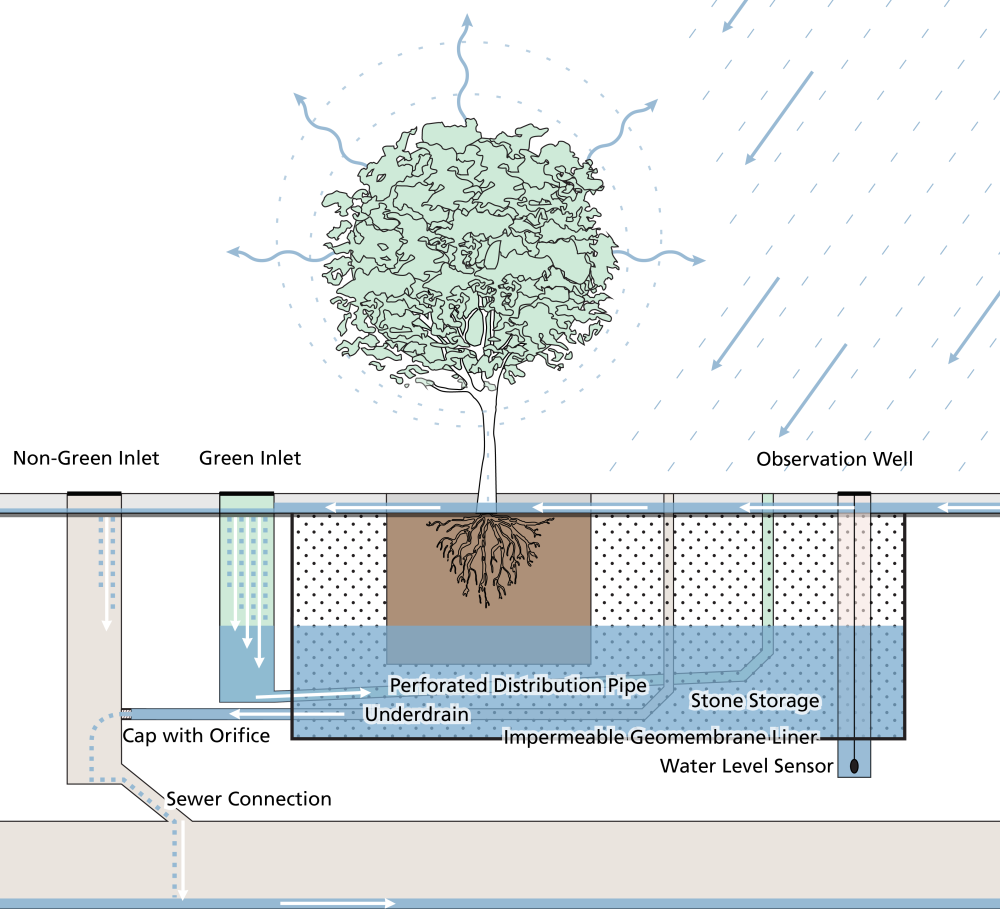Green Stormwater Infrastructure Monitoring
Monitoring and testing green stormwater infrastructure helps us evaluate performance and informs future designs.
|
The Philadelphia Water Department's Green City, Clean Waters program relies heavily on the implementation of green stormwater infrastructure (GSI) throughout the city. Monitoring and testing various GSI systems (stormwater tree trenches, porous pavement, stormwater wetlands) are essential steps in Philadelphia's 25-year plan to reduce combined sewer overflows. PWD has developed a Comprehensive Monitoring Plan that details GSI monitoring activities and describes how monitoring gathers data to assess system performance, verify the impact on sewer systems, and provide information for CSO volume reduction effectiveness and water quality modeling. The final draft of the Green City, Clean Waters Comprehensive Monitoring Plan was submitted to the PADEP and USEPA by the December 1, 2012 deadline. It is currently under review for approval. It is our initial plan for performing monitoring of natural and engineered systems associated with our Green City, Clean Waters program and addresses the monitoring and assessment of surface waters, groundwater, rainfall, CSO discharges, sewer flows, and green infrastructure performance. Comprehensive Monitoring Plan (10.1 MB) Appendices (7.1 MB) Learn how PWD conducts Performance Monitoring to collect water level data from GSI systems and observe groundwater levels surrounding our systems. more >> Learn how PWD does Performance Testing, including infiltration and hydrant tests, on our GSI systems. more >> The methods and objectives of monitoring and testing green stormwater infrastructure are greatly informed by the system's design. The majority of Philadelphia's GSI projects are stormwater tree trenches. Below, we detail three design variations. |
|
|
Stormwater tree trenches designed with a cap between the underdrain and the sewer inlet are meant to promote infiltration of stormwater into the ground. Stormwater runoff enters the green inlet and flows underground through a perforated distribution pipe into a layer of gravel or stone. The runoff is stored in the empty spaces between the stones, watering the trees and slowly infiltrating into the ground through a bottom layer of sand. If the capacity of this system is exceeded, stormwater runoff can bypass it entirely and flow into an existing street inlet. Click image for larger version. |
|
|
This stormwater tree trench captures runoff in a similar manner to the one described above, except it features a cap with a slow-release orifice and an impermeable liner that does not allow for infiltration. In this case, the runoff flows through the distribution pipe, is stored in the stone layer, and is slowly released to the sewer system through the orifice. Even though the water is entering the sewer system, it is doing so at a rate that reduces peak flow in the sewer system. This design is used when there are certain site constraints, such as abnormally high infiltration rates, the presence of underground infrastructure (such as utility lines), or other obstructions that make infiltration into the ground undesirable. Click image for larger version. |
|
|
This design promotes both slow release and infiltration by using both a cap with a slow-release orifice and a permeable sand layer at the bottom. A combination of the previous two designs, it is suitable for sites where infiltration rates were tested and found to be less than 0.25 inches per hour, but where infiltration is still desirable. In this design, water is able to infiltrate into the ground, but the presence of a slow release orifice ensures that water in the trench will drain with 72 hours so that the trench has available storage space for the next storm. Click image for larger version. |


